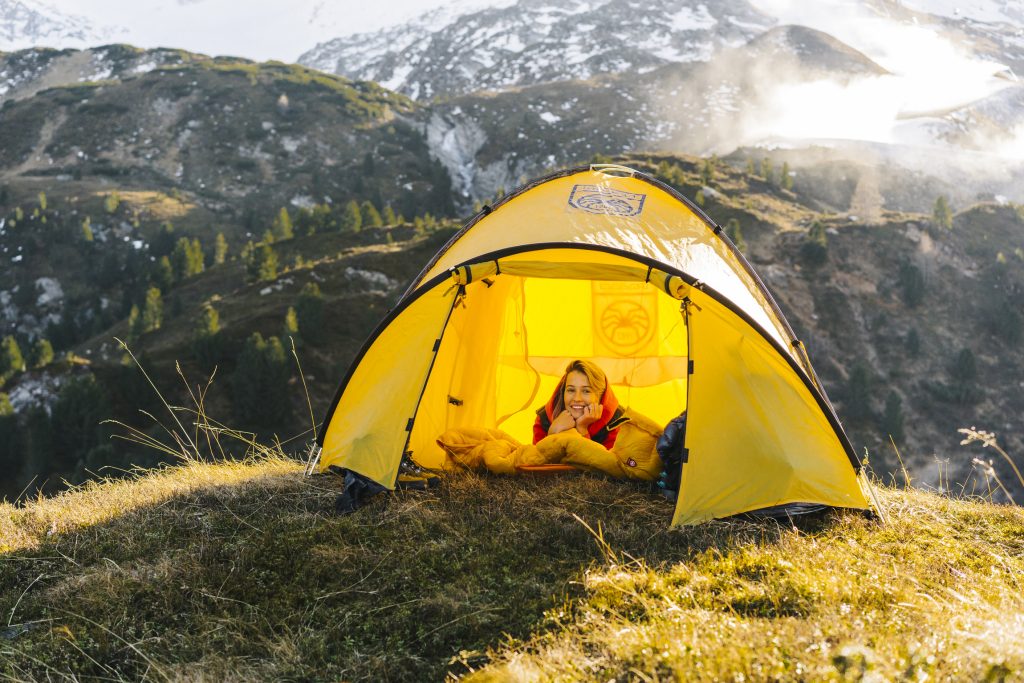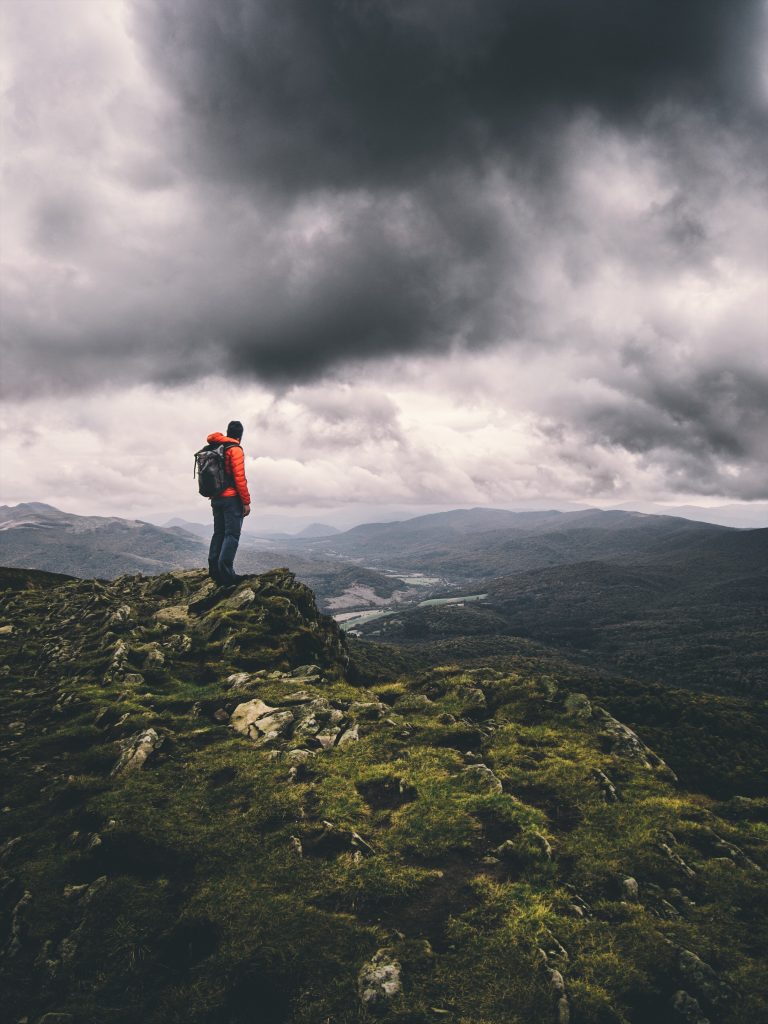
TREKKING LIGHT. WHICH EQUIPMENT ITEMS CAN BE EASILY "TRIMMED DOWN"?
Usually, when embarking on our first multi-day hike in the mountains, we bring absolutely everything that might come in handy - and a little bit more just in case. We only realize how bad of an idea that was once we hit the trail. When fatigue sets in, every kilogram carried on our backs becomes painfully noticeable. Every mountain hiker eventually starts to trim down their trekking gear to avoid unnecessary strain and be able to hike faster and farther. If you're planning to lighten the contents of your mountain backpack, be sure to read our article - we provide tips on which equipment items are easiest to slim down without compromising their functionality.
WHAT WILL YOU LEARN FROM THIS POST?
- Why is it worth hiking in the mountains "lightweight"?
- What is the so-called "big three" mountain equipment?
- How to reduce the weight of your backpack in the mountains?
- Is a tent always the only option for overnight stays in the field?
- Why is a down sleeping bag a better choice than a synthetic one?
- How to assemble clothing for a multi-day trek?
IN BRIEF
The philosophy of "lightweight" hiking (also known as light & fast) aims to minimize the weight of the necessary trekking equipment through smart packing and replacing certain items with lighter alternatives. The "big three" items that are easiest to slim down are the backpack, tent, and sleeping bag.
HIKING LIGHTWEIGHT - FASTER, FARTHER, SAFER
In general, packing for the mountains is an art of letting go. You can't bring everything on the trail - if you don't want to carry a 30-kilogram baggage on your back, you have to give up an extra set of clothes or trim down your provisions. However, a lighter backpack has several advantages. Firstly, a lighter backpack means less energy expenditure, which translates to less fatigue. By hiking "lightweight," you can increase your pace or go further and see more. With a lighter load, you also don't need boots that are as heavy-duty, which further improves your walking speed and reduces fatigue - apparently, wearing heavy footwear is more tiring than carrying a heavy backpack.

THE BIG THREE OF LIGHT & FAST HIKING
The easiest equipment elements to slim down are the so-called "big three": backpack, tent, and sleeping bag (sometimes a sleeping pad is also included). This term comes from across the ocean and is often heard on long-distance trails in North America. The "big three" represent the heaviest part of trekking gear, and at the same time, they are the items where you can save the most weight. Trimming down the backpack, tent, or sleeping bag will have a much greater effect than reducing the weight of smaller equipment items.
BACKPACK
The weight of a backpack is influenced by two things: its capacity and the suspension system used. First and foremost, don't buy a backpack that is too large "just in case." Extra space in the bag is always tempting to fill with something else - and from experience, we know that "something else" usually isn't the most necessary item. Even for a multi-day hike, a backpack of approximately 50 liters is sufficient (plus or minus 10 liters depending on the length of the trip). 80-liter models are transport backpacks. Carrying such a behemoth on your back, even for a walk on an asphalt road to Morskie Oko, is a real challenge.
The choice of a suspension system is a compromise. A good back-supporting "frame" will always add weight - there is no other option. You have to decide if you can accept slightly less support during the hike in exchange for lighter weight. In addition, the material of the backpack will also affect its weight - thicker fabric is more durable but also heavier. A model made of ultra-durable Cordura 1000d will undoubtedly withstand the toughest adventures through the wilderness, but do you really need it for every hike? When looking for a backpack, pay attention to how much the model weighs "empty" - the weight of the lightest backpacks on the market, such as the ultralight XC3, usually does not exceed 600-800 grams.
TENT
The second element of the "big three" is the tent. Nowadays, tents are much lighter than they used to be - the once 4-kilogram "monsters" have reduced in weight to two or even one kilogram. If you are hiking with a companion, you can divide the tent components between yourselves - one person can pack the frame, and the other can carry the flysheet.
For solo hiking, consider if you really need a tent at all. An alternative could be a hammock or a tarp, which is a lightweight shelter made of durable, waterproof material with special attachment cords. You can stretch the tarp between trees or set it up using trekking poles. In terms of weight-saving, the tarp seems to be the best (because the lightest) option.

SLEEPING BAG + SLEEPING PAD
You can save a considerable amount of weight by switching from a synthetic sleeping bag to a down sleeping bag - this change alone can save you over half a kilogram. In terms of weight-to-thermal properties ratio, natural down is unmatched - it's the lightest and best option for sleeping in the wilderness. A down sleeping bag will provide thermal comfort in any conditions while not burdening your backpack or taking up too much space (it compresses to a small package size). Just make sure to choose the right sleeping bag for the expected conditions at your sleeping location. Obviously, a model designed for winter conditions won't work well during a summer trek and will also add unnecessary weight to your pack.
Consider replacing your sleeping pad with an inflatable camping mattress. Although it won't change the overall weight of the equipment (both items weigh roughly the same), it will significantly improve sleep comfort - the mattress is several times thicker than a sleeping pad.
WHAT ELSE CAN BE LIGHTENED?
Look for weight savings in your trekking gear, including your clothing. Clothes designed for mountain hiking perform better in the field than a cotton t-shirt and sweatpants. They are not only lighter but also quick-drying. You can easily wash them during the trip without worrying that they won't dry in time because they dry rapidly. Even for a multi-day hike, pack 2-3 sets of clothing in your backpack - you don't need a separate set for each day of trekking.
Also, consider replacing a fleece or a sweatshirt with a down jacket. Chances are you already have a warmer layer in your backpack for your vacation trips. A down jacket will provide excellent insulation against the cold and will be much lighter than a fleece. In early spring or autumn, it can even replace multiple layers of thermal clothing.
You can also save valuable kilograms on food supplies. It is well known that the best option for long-distance trekking is freeze-dried food, which itself is lightweight - one full meal weighs less than 100 grams. However, to prepare it in the wilderness, you need a camping stove and gas cartridges - which add extra weight. A cooking set will weigh between 1100 g and... 250 g. If you want to hike really "lightweight" and at the same time can afford to descend into the valleys and replenish supplies from stores, consider forgoing carrying provisions (of course, not entirely - you still need something for unforeseen circumstances) in favor of replenishing as needed.

Going faster, farther, and more confidently - trekking "lightweight" has many advantages. To properly lighten your gear, you need to have some mountain experience. After all, the philosophy of light & fast does not require any radical actions. There's no need to cut off toothbrush handles, rip belts off backpacks, or cut out sections of maps. Simply think about what you will really need in the field and resist the temptation to pack too many items "just in case." One final important piece of advice: if you're lightening your equipment, lighten everything. Saving a few grams on each item will result in a backpack several kilograms lighter.
If you're looking for a sleeping bag or jacket that will lighten your trekking gear, visit pajaksport.pl. Our designs have been accompanying hikers and climbers in achieving the most ambitious mountain goals for years.
Image source: pajaksport.pl